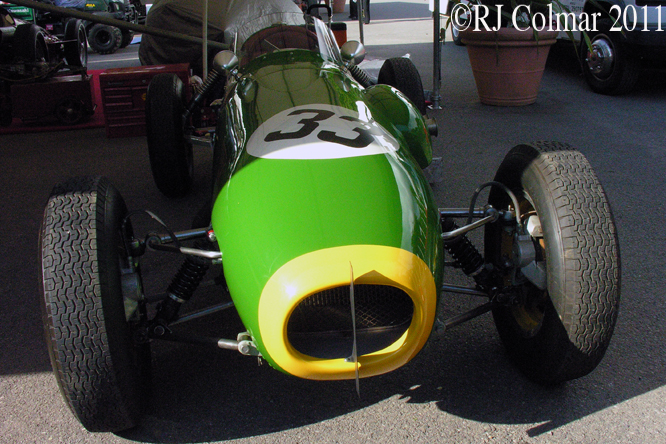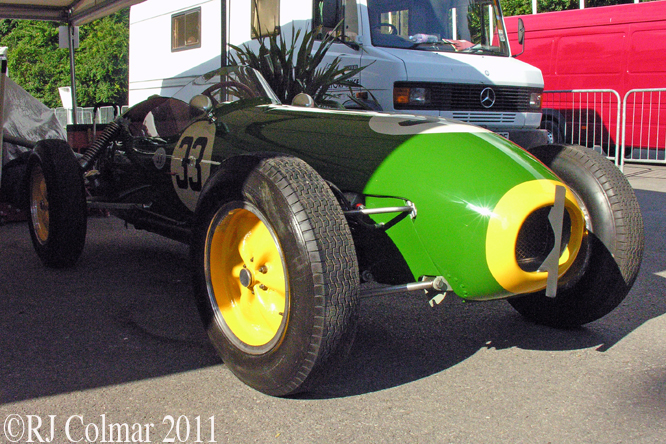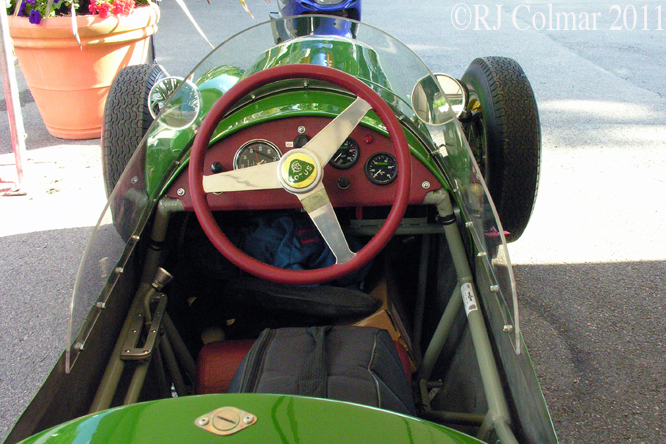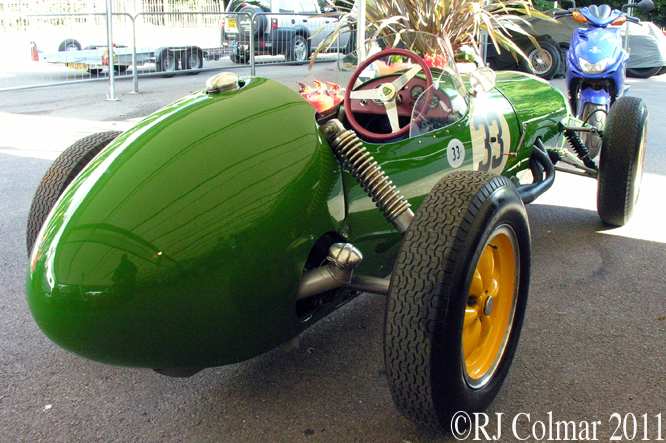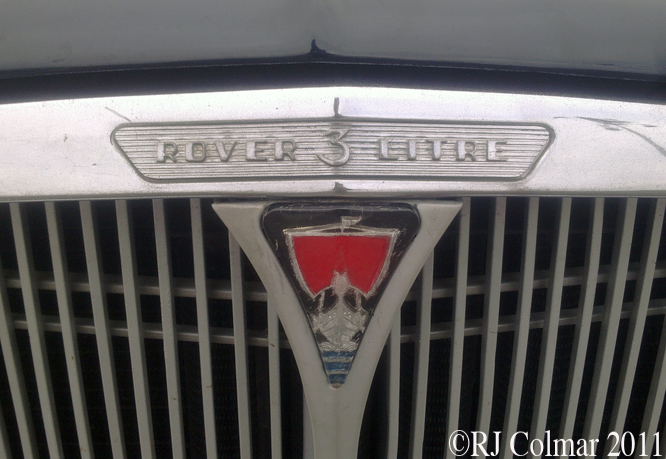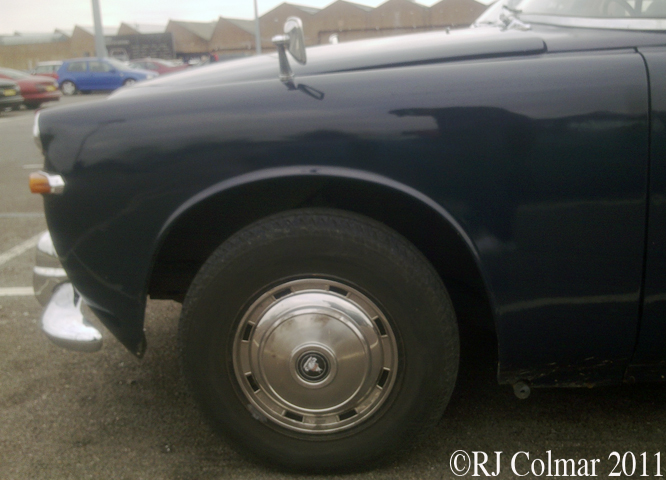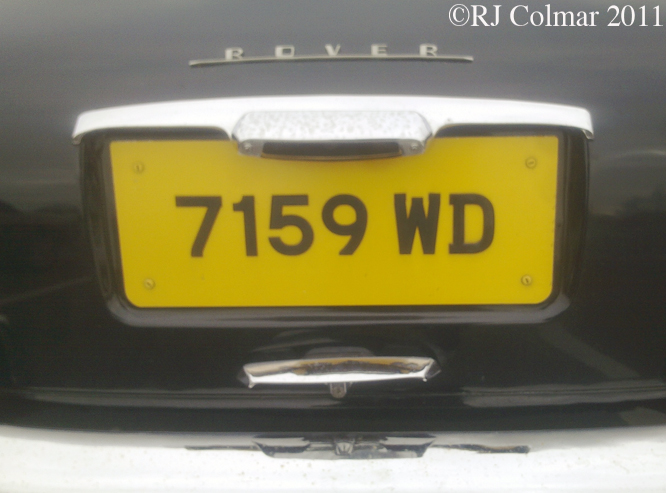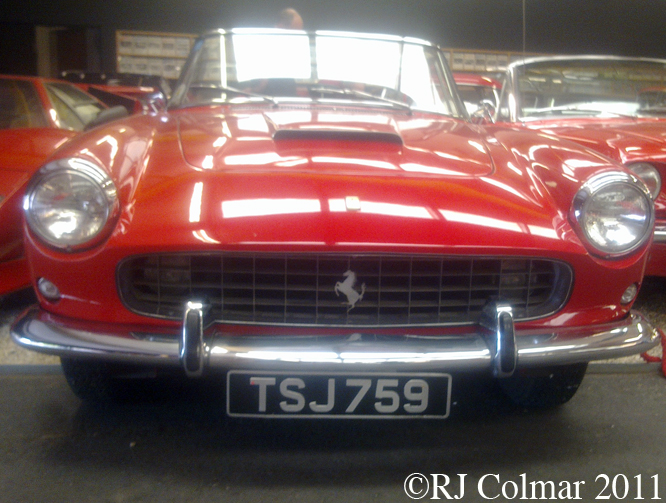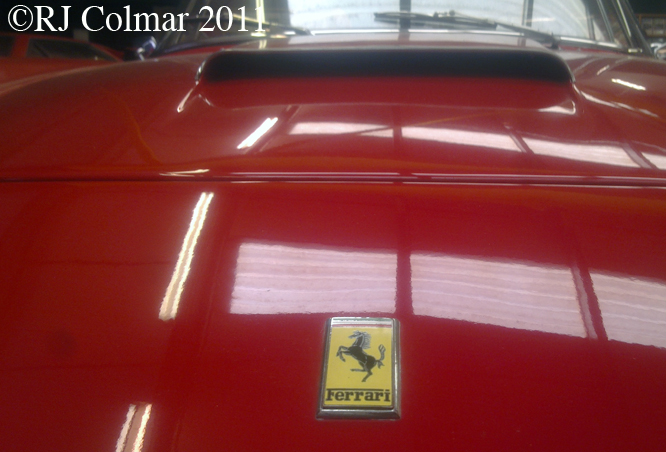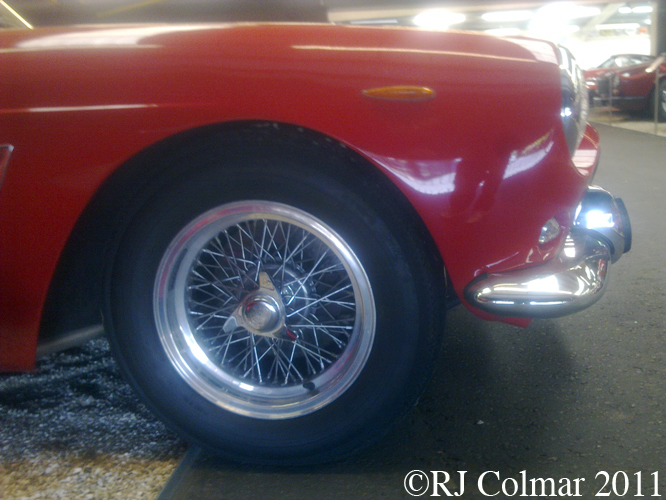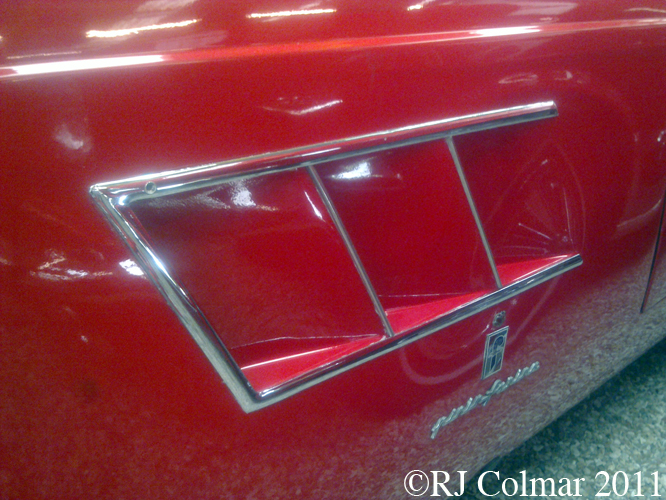Last week I looked at a FIAT Dino Spider that was part of a programme to homologate (legitimise) Ferrari’s V6 Dino engine, which had impressed many when fitted to the 166 P sportscar in 1965, for the second tier European Formula 2 Championship which mandated 1.6 litre / 97.6 cui motors with a maximum of 6 cylinders based on production blocks of which at least 5000 examples had been cast.

Today’s featured car is the second of seven Ferrari Dino 166’s, that were built to compete in the European Formula 2 Championships from 1967 to 1969. It was first raced in 1967 by Chris Amon at the Hockenheimring in a Formula 2 race in which it did not finish. #0004 was then used by Chris in the Tasman series run in Australia, New Zealand and Tasmania where engines of up to 2.5 litres / 152 cui were mandated.
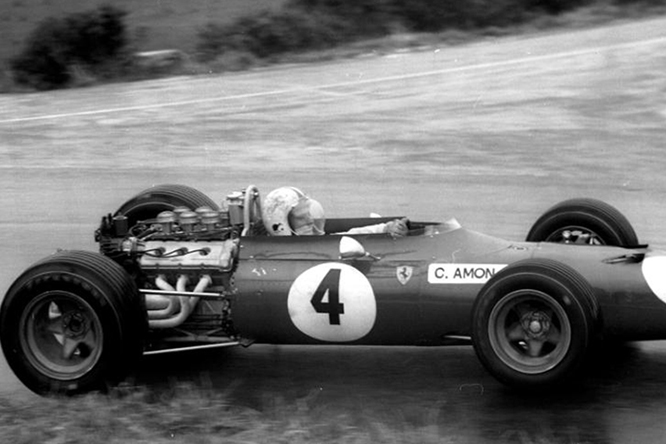
(Chris Amon, Ferrari 166/246 #0004, Longford, Tasmania, March 4th, 1968, Copyright Rod Mackenzie 1968)
Ferrari sent two motors ‘down under’ one a 2.4 litre / 146 cui V6 with three valves per cylinder and the second with 4 valves per cylinder. Amon won the first two races of the 1968 Tasman series in New Zealand and scored two further second place and two 4th place finishes to be in with a mathematical shot at the championship going into the final round but Jim Clark was not to be denied and Amon finished second to the Scotsman in the final championship standings. Chris is seen in Rod Mackenzie’s photo above driving to a 7th place finish in the last race of the season at Longford, Tasmania. Without doubt this photo represents the furthest point south in a photograph ever published on ‘Gettin’ a li’l psycho on tyres’.
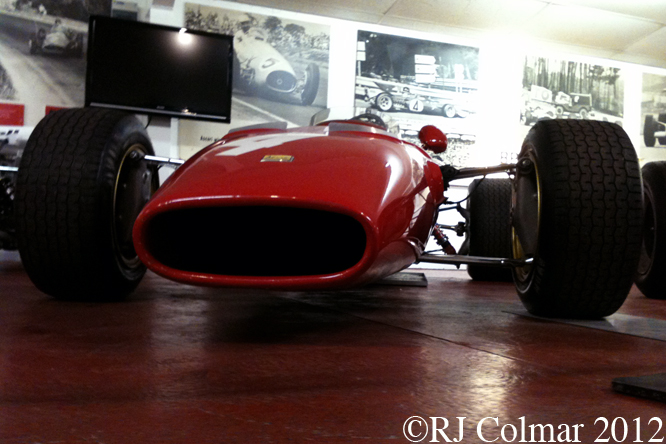
Back in Europe #0004 was returned to Formula 2 specification with a longer wheel base and an upgraded 225 hp 1.6 litre / 97.6 cui motor with four valves per cylinder in place of the original F2 spec 3 valves per cylinder. On October 13th 1968 Ernesto “Tino” Brambilla scored a memorable victory, from an 8th place start, at the Hockenheimring by putting all four wheels on the grass as he overtook his team mate Derek Bell and Henri Pescarolo driving a Matra on the last lap. Brambilla’s greatest moment was also Ferrari’s first Formula 2 victory since Wolfgang “Taffy” von Trips class win in the 1960 Italian Grand Prix.
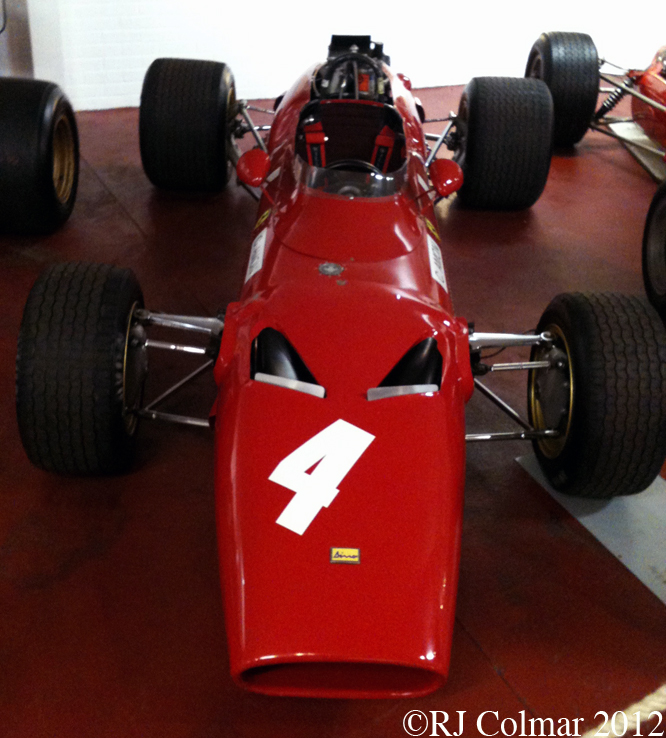
Brambilla then drove chassis #0004 to two further consecutive victories at Vallelaguna in Italy and Buenos Aires, Argentina where the #0004 was being used in the South American Temporada F2 series. Andrea de Adimich driving another Dino 166 took three victories in the remaining ’68 Temporada Series races to win the Championship while Tino recorded three DNF’s (Did Not Finish). Tino drove the car four more times in Europe in 1969 recording a best 4th place at Jarama in Spain.
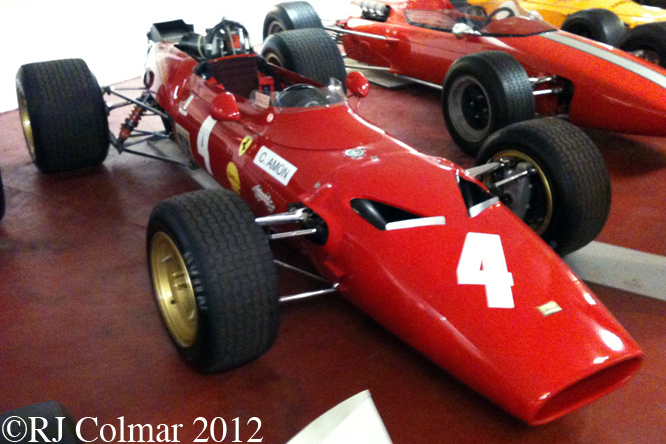
Chris Amon often considered by everybody except himself to be the unluckiest man in Grand Prix racing went back to compete in the Tasman championship with 166/346 chassis #0008 in 1969. Taking five wins from ten races along with four podium finishes Chris sealed the deal with the Dino at the second time of asking. Fellow New Zealander Graeme Lawrence repeated the Tasman Championship winning feat in 1970 using the same #0008 chassis Chris had used the year before.
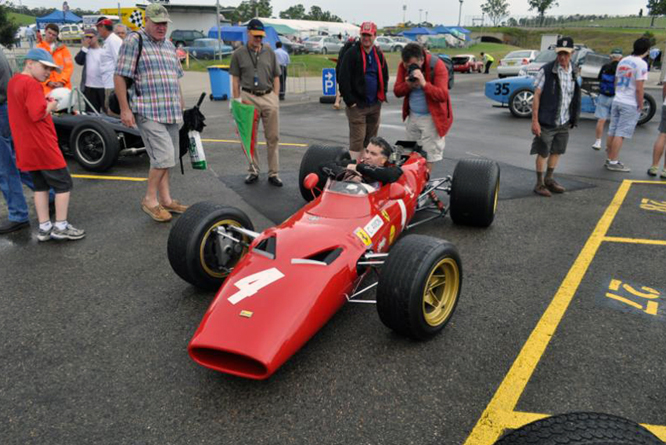
(Rob Hall, Ferrari 166/246 #0004, Eastern Creek International Raceway November 2010, Copyright Rod Mackenzie 2010)
Everett Anton Singer owned #0004 from the mid 1980’s to the late 1990’s during which time the car won it’s class twice in Concours d’Elegance events at Atlanta (’89) and Watkins Glen (’90). #0004, now owned by Graham Adleman has revisited the Antipodes twice since it’s heyday. With Rob Hall drove #0004 to win the 2008 Tasman Revival meeting at Eastern Creek International Raceway just outside Sydney Australia and just getting pipped by a a 3 litre 183 cui Lotus 49 in 2010 Tasman Revival meeting at the same venue. The Tasman Revival will be taking place again this year further details of the event can be found on this link.
My thanks to Rod Mackenzie for the use of his photographs and to everyone who contributed to the “1968 Ferrari Tipo 166 Dino Formula II” thread at The Nostalgia Forum where more photo’s of #0004 have been posted, particular thanks to Alan Cox for identifying #0004 and ellrosso of the OldRacePhoto.com website which gives viewers a fascinating insight into racing down under over a period spanning several decades.
Thanks for joining me on this “Three Continent Veteran” edition of “Gettin a li’l psycho on tyres”, I hope you will join me again tomorrow. Don’t forget to come back now !









